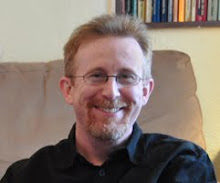(Traffic circles and roundabouts are technically different. In traffic circles, priority is often given to drivers entering the circle. In roundabouts, drivers entering the circle generally have to yield to drivers already in the circle. I often use the terms interchangeably but the efficiency increased mentioned in Traffic applies to roundabouts.)
(Satellite view courtesy of Google Maps)
Above is a roundabout in a residential area of St. Petersburg, Florida. I'm not wild about this one; based on observation it's not effective at slowing traffic. Traffic from two directions does not have to reduce speed until it's well into the circle, so drivers from these directions often force the right-of-way, increasing the possibility of a crash. Unfortunately, I'm not sure of an effective solution because of the divided road on the east side of the circle. Expanding the width of the roundabout might work, but this would require acquisition of substantial amounts of the surrounding private properties.
(Satellite view courtesy of Google Maps)
The above roundabout is also in St. Petersburg. It seems effective at slowing traffic. It's smaller than the earlier roundabout and it's located in a commercial district.
Above is a photo I took of Columbus Circle in Manhattan in 2005. This is a traffic circle; entry is controlled by stop lights. Traffic circles and roundabouts can do more than calm traffic. They offer a public space - note the benches around the interior of the circle - and they offer a forum for public art, in this case a statue of Christopher Columbus.
(Satellite view courtesy of Google Maps)
One of the highlights of a recent trip to Washington, DC, was an evening hanging out in DuPont Circle. It not only manages the intersection of four streets but provides a public greenspace. Benches line the circle. Julie and I sat with cold beverages while enjoying the diversity of ethnicities, ages, income levels, and activities around us. Dog walkers, athletes and families passed by, along with people who appeared to be homeless and others dressed in a formal business attire. On nearby streets we found a range of shops and restaurants, as well as a DC Metro station, giving us easy access to the entire DC area. It's the kind of public space all communities could use more of.






No comments:
Post a Comment